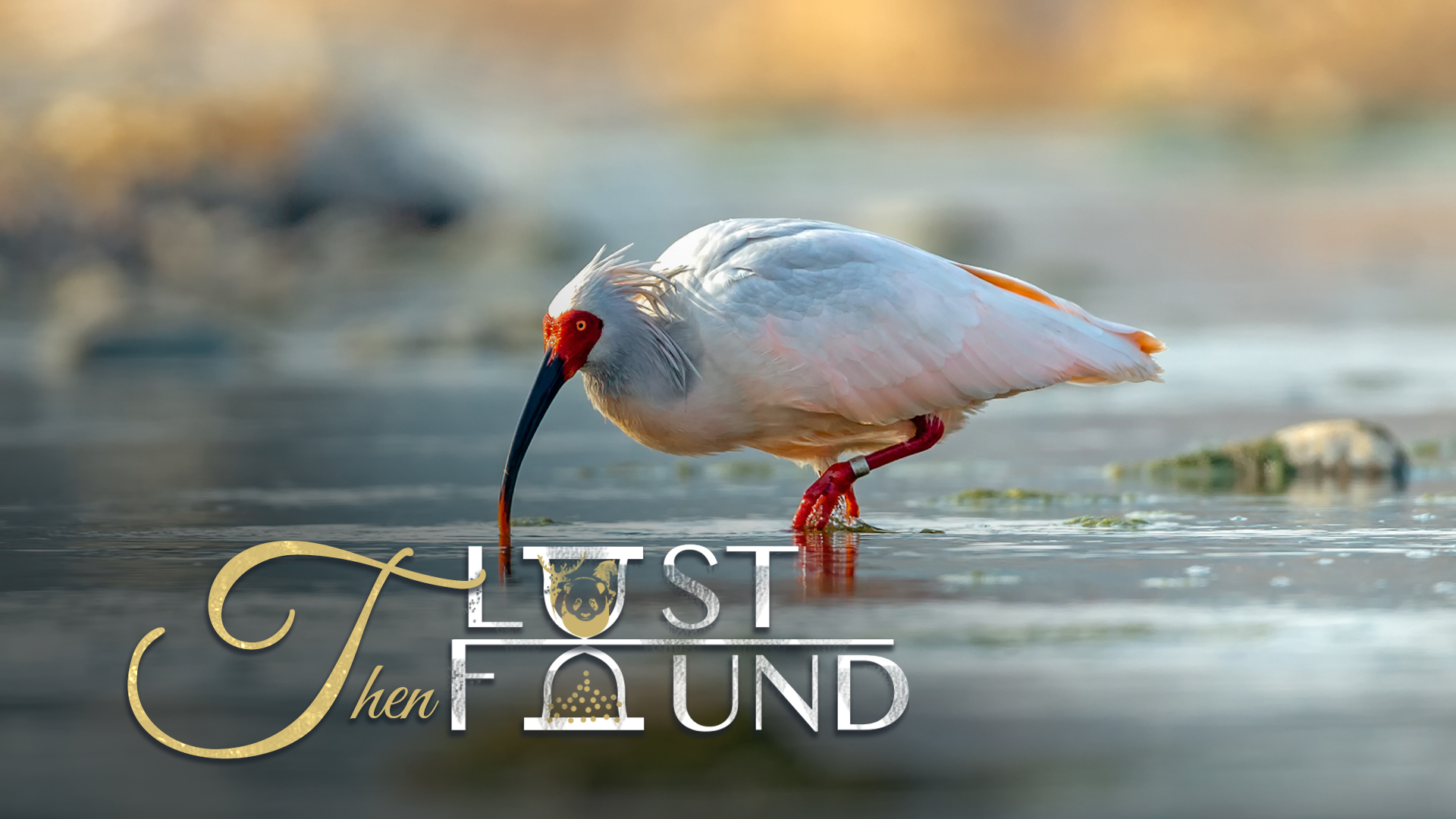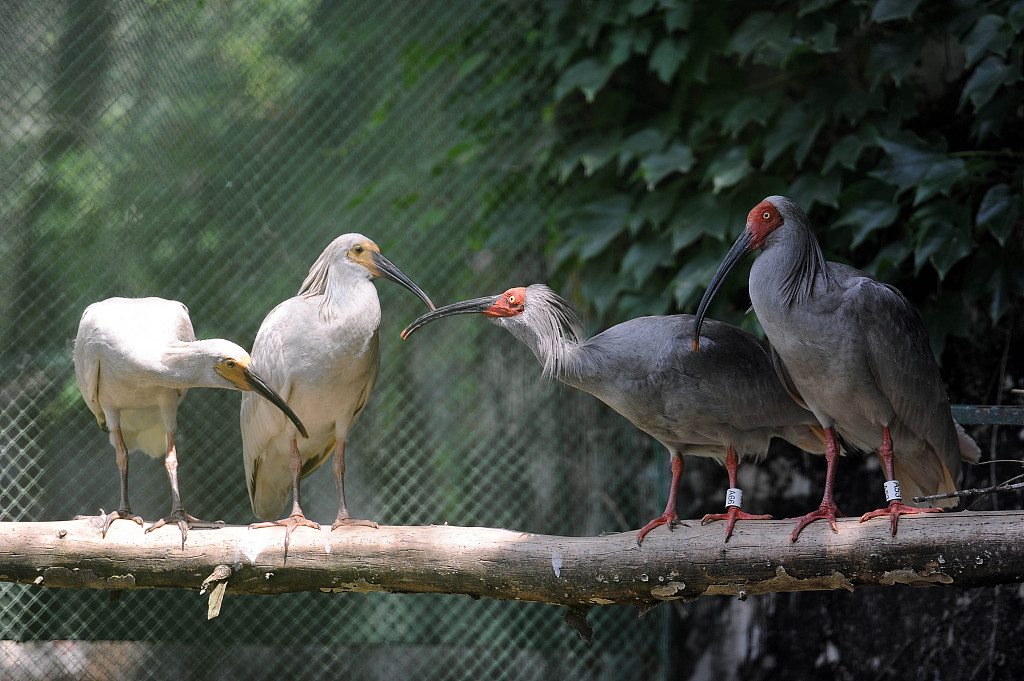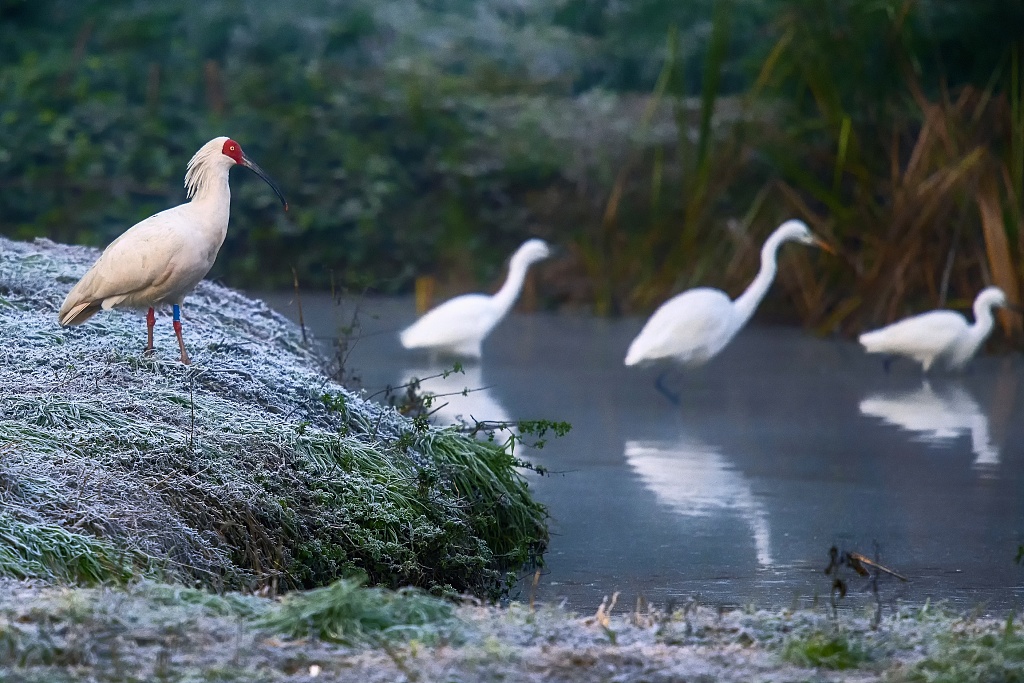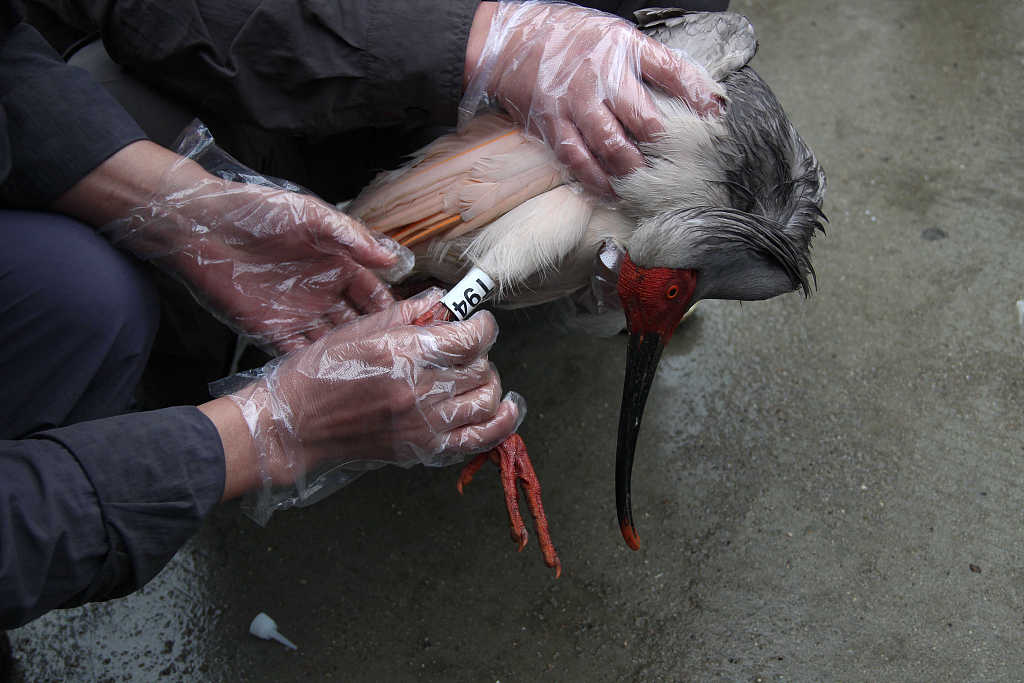01:49

Before a crested ibis chick grows up and has a family of its own, there are many of challenges waiting ahead. Falling off the nest, meeting snakes or other natural enemies, or even being unable to break out of the shell. All these challenges make it difficult for conservationists to protect the bird, especially the captive breeding of crested ibises.
Back in 1980, only five crested ibises were known to survive in the wild on Sado Island in Japan. Considering the deteriorating environment in the wild, these birds were taken into captivity in 1981. However, people didn't fully understand their habits at that time. The captive-bred birds would soon get bacterial infections or other illnesses. The plan to captive breed the bird was then aborted.

Four crested ibises in the nature reserve of Yangxian County in northwest China's Shaanxi Province. /VCG
Four crested ibises in the nature reserve of Yangxian County in northwest China's Shaanxi Province. /VCG
When scientists found the last seven crested ibises in northwest China's Shaanxi Province in 1981, they were much more cautious. They built a shack under the tree that crested ibises nested in and watched the birds day and night.
The protection team recorded nearly everything they observed, like how many times the adult bird would turn the egg every day and how much would they feed each fledgling. These abundant data and experience proved valuable in the future captive breeding program.
Still, conservationists spread butter on tree trunks and installed protective devices to prevent the bird's natural enemies like snakes from preying. They also set up a "safety net" under the tree for those birds falling off the nest accidentally.

A crested ibis in Deqing, Zhejiang Province. /VCG
A crested ibis in Deqing, Zhejiang Province. /VCG
Despite careful protections, the number of crested ibis in the wild in 1990 was only nine. To expand its population, the captive breeding program was put on the agenda. In 1989, the world's first crested ibis was hatched under artificial breeding conditions in Beijing Zoo. Unfortunately, the bird survived only one week.
When the crested ibises were hatched in captivity, less than half of them were able to break out of the shell and survive because the adult birds would damage the egg or abandon the chick. Though the crested ibis nestlings were difficult to raise artificially, scientists came up with various measures in the 1990s.
To ensure the birth of nestlings, scientists took eggs from nests and put them in incubators. They constantly adjusted the temperature for the embryonic development. Once the chicks showed signs of breaking the shell, keepers would check every two hours to see whether they needed any help.

An injured crested ibis was released into the wild after recovery in Yangxian, Shaanxi Province. /VCG
An injured crested ibis was released into the wild after recovery in Yangxian, Shaanxi Province. /VCG
After the birth, keepers would use droppers to feed them loach, beef and mealworms. The crested ibis chicks would stay in the rearing ark for one week, and then move to the incubator for half a month. After about 45 days, the fledglings would be able to live with peers in the big cage outside. They were able to fly at two months old.
By 2019, the captive-bred crested ibis was in its 10th generation. After decades of protection, its population in captivity was over 1,000 in 2018. It's truly a remarkable comeback.
About 'Lost then Found' series:
Many species on Earth went extinct because of environmental changes, evolutionary problems, habitat loss, or human activity. The disappearance of species from Earth is ongoing, but some species are lucky to survive thanks to conservation efforts. In this series, CGTN will guide you through the journey of saving these creatures from extinction.
For more:
From 7 to 4,400: The crested ibis conservation success story
(Cover image designed by CGTN's Li Yueyun)
(If you want to contribute and have specific expertise, please contact us at nature@cgtn.com.)